Category: Recommended Reading
Letter To My Son
Ta-Nehisi Coates in Magzter:
Son,
 Last Sunday the host of a popular news show asked me what it meant to lose my body. The host was broadcasting from Washington, D.C., and I was seated in a remote studio on the Far West Side of Manhattan. A satellite closed the miles between us, but no machinery could close the gap between her world and the world for which I had been summoned to speak. When the host asked me about my body, her face faded from the screen, and was replaced by a scroll of words, written by me earlier that week.
Last Sunday the host of a popular news show asked me what it meant to lose my body. The host was broadcasting from Washington, D.C., and I was seated in a remote studio on the Far West Side of Manhattan. A satellite closed the miles between us, but no machinery could close the gap between her world and the world for which I had been summoned to speak. When the host asked me about my body, her face faded from the screen, and was replaced by a scroll of words, written by me earlier that week.
The host read these words for the audience, and when she finished she turned to the subject of my body, although she did not mention it specifically. But by now I am accustomed to intelligent people asking about the condition of my body without realizing the nature of their request. Specifically, the host wished to know why I felt that white America’s progress, or rather the progress of those Americans who believe that they are white, was built on looting and violence. Hearing this, I felt an old and indistinct sadness well up in me. The answer to this question is the record of the believers themselves. The answer is American history.
There is nothing extreme in this statement. Americans deify democracy in a way that allows for a dim awareness that they have, from time to time, stood in defiance of their God. This defiance is not to be much dwelled upon. Democracy is a forgiving God and America’s heresies torture, theft, enslavement are specimens of sin so common among individuals and nations that none can declare themselves immune. In fact, Americans, in a real sense, have never betrayed their God. When Abraham Lincoln declared, in 1863, that the battle of Gettysburg must ensure “that government of the people, by the people, for the people, shall not perish from the earth,” he was not merely being aspiration. At the onset of the Civil War, the United States of America had one of the highest rates of suffrage in the world. The question is not whether Lincoln truly meant “government of the people” but what our country has, throughout its history, taken the political term people to actually mean. In 1863 it did not mean your mother or your grandmother, and it did not mean you and me. As for now, it must be said that the elevation of the belief in being white was not achieved through wine tastings and ice-cream socials, but rather through the pillaging of life, liberty, labor, and land.
More here. (Note: At least one post throughout the month of February will be devoted to Black History Month. The theme for 2022 is Black Health and Wellness)
The Life Breonna Taylor Lived, in the Words of Her Mother
Ta-Nehisi Coates in The Atlantic:
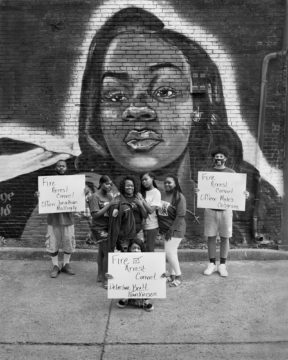 Kenny calls me in the middle of the night. He says, Somebody kicked in the door and shot Breonna. I am dead asleep. I don’t know what he’s talking about. I jump up. I get ready, and I rush over to her house. When I get there, the street’s just flooded with police—it’s a million of them. And there’s an officer at the end of the road, and I tell her who I am and that I need to get through there because something had happened to my daughter. She tells me I need to go to the hospital because there was two ambulances that came through, and the first took the officer and the second took whoever else was hurt. Of course I go down to the hospital, and I tell them why I am there. The lady looks up Breonna and doesn’t see her and says, Well, I don’t think she’s here yet. I wait for about almost two hours. The lady says, Well, ma’am, we don’t have any recollection of this person being on the way.
Kenny calls me in the middle of the night. He says, Somebody kicked in the door and shot Breonna. I am dead asleep. I don’t know what he’s talking about. I jump up. I get ready, and I rush over to her house. When I get there, the street’s just flooded with police—it’s a million of them. And there’s an officer at the end of the road, and I tell her who I am and that I need to get through there because something had happened to my daughter. She tells me I need to go to the hospital because there was two ambulances that came through, and the first took the officer and the second took whoever else was hurt. Of course I go down to the hospital, and I tell them why I am there. The lady looks up Breonna and doesn’t see her and says, Well, I don’t think she’s here yet. I wait for about almost two hours. The lady says, Well, ma’am, we don’t have any recollection of this person being on the way.
More here. (Note: At least one post throughout the month of February will be devoted to Black History Month. The theme for 2022 is Black Health and Wellness)
How We Became Post-Modern
Jane O’Grady at Literary Review:
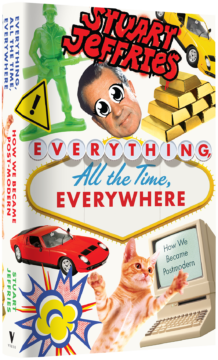 We easily and often apply the label ‘postmodern’ to particular artworks, architecture, activities and ideas; it is harder to specify some common quality of postmodernism that they all share. Far more than other historical phases, ‘postmodernity’ seems almost to have been concocted by those who write about it. The term suggests an impossible realm – after the present yet somehow already present itself; the concept, judging by the copious literature on it, is precisely about imprecision and lack of essence, and better defined by what it is not. Jean-François Lyotard’s much-cited The Postmodern Condition (1979) diagnosed in it an absence of ‘grand narratives’ (Christianity, liberalism, Marxism), which have been abandoned due to lack of faith in the march of progress. We are left instead, in a Waste Land way, with fragments we have shored against our ruin. Now that modernism has exhausted outrage and authenticity, and been domesticated and canonised, all postmodern art and architecture can do is pastiche and appropriate earlier styles, blazoning their own lack of originality. A central principle of postmodernism is ‘intertextuality’, the notion that ‘any text is the absorption and transformation of any other’, in the words of Julia Kristeva.
We easily and often apply the label ‘postmodern’ to particular artworks, architecture, activities and ideas; it is harder to specify some common quality of postmodernism that they all share. Far more than other historical phases, ‘postmodernity’ seems almost to have been concocted by those who write about it. The term suggests an impossible realm – after the present yet somehow already present itself; the concept, judging by the copious literature on it, is precisely about imprecision and lack of essence, and better defined by what it is not. Jean-François Lyotard’s much-cited The Postmodern Condition (1979) diagnosed in it an absence of ‘grand narratives’ (Christianity, liberalism, Marxism), which have been abandoned due to lack of faith in the march of progress. We are left instead, in a Waste Land way, with fragments we have shored against our ruin. Now that modernism has exhausted outrage and authenticity, and been domesticated and canonised, all postmodern art and architecture can do is pastiche and appropriate earlier styles, blazoning their own lack of originality. A central principle of postmodernism is ‘intertextuality’, the notion that ‘any text is the absorption and transformation of any other’, in the words of Julia Kristeva.
more here.
Wednesday Poem
Tempest in a Teacup
Prospero
Assume, just for a moment,
I am denied a job
in the factory of my dreams
under the fluorescent lights
of a porcelain white foreman.
It’s orderly and neat.
I feed my family.
No one questions my face.
I raised my son in my likeness,
so he would never go unseen,
bobbing on a wave of expectation,
I set in motion with my back
put into my work, praying
for my country, blessed
with more of me, never worrying
about those who might die,
or those who did, trying
to stir a storm, trying
to stand where I’m standing.
Tuesday, February 22, 2022
Chekhov Large and Small
Bob Blaisdell in the Los Angeles Review of Books:
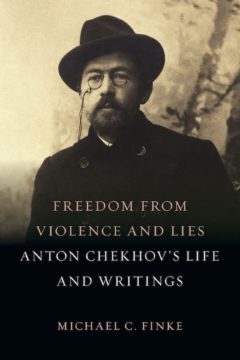 Chekhov is easier to know and read than the other Russian giants. He doesn’t look big or talk big. He’s funny on purpose. He shows us how to read him; he quietly attunes us to place and situation. We observe more than judge his characters’ actions; we detect their mental and emotional states through their physical symptoms. Chekhov began his professional career as a writer while in medical school. Even as he imagined the agitations and disruptions and occasional explosions of his characters, he was always also a doctor. He describes what it feels like to fall in love, to be pregnant and to miscarry, to bully one’s children, to flutter about helplessly while seeking someone to love, to have typhus, to cringe with embarrassment over a bespattering sneeze, to blather like a professor, to be struck dumb by love, to beg for sympathy, to grieve, to menace the innocent, to be conscious of but prey to one’s weaknesses, to be overworked to the point of hallucinating, to be ruthless.
Chekhov is easier to know and read than the other Russian giants. He doesn’t look big or talk big. He’s funny on purpose. He shows us how to read him; he quietly attunes us to place and situation. We observe more than judge his characters’ actions; we detect their mental and emotional states through their physical symptoms. Chekhov began his professional career as a writer while in medical school. Even as he imagined the agitations and disruptions and occasional explosions of his characters, he was always also a doctor. He describes what it feels like to fall in love, to be pregnant and to miscarry, to bully one’s children, to flutter about helplessly while seeking someone to love, to have typhus, to cringe with embarrassment over a bespattering sneeze, to blather like a professor, to be struck dumb by love, to beg for sympathy, to grieve, to menace the innocent, to be conscious of but prey to one’s weaknesses, to be overworked to the point of hallucinating, to be ruthless.
More here.
Sean Carroll’s Mindscape Podcast: Arvid Ågren on the Gene’s-Eye View of Evolution
Sean Carroll in Preposterous Universe:
One of the brilliant achievements of Darwin’s theory of natural selection was to help explain apparently “purposeful” or “designed” aspects of biology in a purely mechanistic theory of unguided evolution. Features are good if they help organisms survive. But should we put organisms at the center of our attention, or the genetic information that governs those features? Arvid Ågren helps us understand the attraction of the “selfish gene” view of evolution, as well as its shortcomings. This biological excursion has deep connections to philosophical issues of levels and emergence.
More here.
Paul Farmer, Pioneer of Global Health, Dies at 62
Ellen Barry and Alex Traub in the New York Times:
 Paul Farmer, a physician, anthropologist and humanitarian who gained global acclaim for his work delivering high-quality health care to some of the world’s poorest people, died on Monday on the grounds of a hospital and university he had helped establish in Butaro, Rwanda. He was 62.
Paul Farmer, a physician, anthropologist and humanitarian who gained global acclaim for his work delivering high-quality health care to some of the world’s poorest people, died on Monday on the grounds of a hospital and university he had helped establish in Butaro, Rwanda. He was 62.
Partners in Health, the global public health organization that Dr. Farmer helped found, announced his death in a statement that did not specify the cause.
Dr. Farmer attracted public renown with “Mountains Beyond Mountains: The Quest of Dr. Paul Farmer, a Man Who Would Cure the World,” a 2003 book by Tracy Kidder that described the extraordinary efforts he would make to care for patients, sometimes walking hours to their homes to ensure they were taking their medication.
More here.
Bertrand’s Paradox
Black Humanity and Black Power
Peniel Joseph in Boston Review:
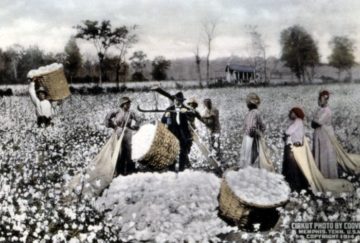 Black humanity is unexceptional, Walter Johnson exhorts. Once we have taken up the debate of humanization versus dehumanization under slavery, we have already ceded critical ground. Like Johnson, midcentury Black Power activists understood that it was necessary to redirect such questions toward the matter of how the legacy of racial slavery continues to shape citizenship, democratic participation, and human rights, not just for black Americans but for people of color around the globe. Johnson’s essay offers profitable avenues for reappraising how Black Power is the conceptual bridge between Reconstruction-era black struggles for self-determination and Black Lives Matter’s present-day fight to end martial and economic violence against people of color.
Black humanity is unexceptional, Walter Johnson exhorts. Once we have taken up the debate of humanization versus dehumanization under slavery, we have already ceded critical ground. Like Johnson, midcentury Black Power activists understood that it was necessary to redirect such questions toward the matter of how the legacy of racial slavery continues to shape citizenship, democratic participation, and human rights, not just for black Americans but for people of color around the globe. Johnson’s essay offers profitable avenues for reappraising how Black Power is the conceptual bridge between Reconstruction-era black struggles for self-determination and Black Lives Matter’s present-day fight to end martial and economic violence against people of color.
One of the most critical contributions of the Black Power movement was its searing critique of American racial capitalism. The movement’s roots in multiple strands—black nationalist, black feminist, black Marxist—of the black radical tradition formed the basis of its understanding of political revolution, community organizing, and the links between local, national, and global human rights struggles. Inspired in part by Nation of Islam theology—which holds the foundational belief that people of color are the most fully human of all—Malcolm X, Black Power’s political and ideological avatar, predicated his political ideology on the conviction that slavery’s legacy is central in shaping contemporary racial oppression.
More here. (Note: At least one post throughout the month of February will be devoted to Black History Month. The theme for 2022 is Black Health and Wellness)
Immortal Homosexual Poets
Michael Finnissy at Artforum:
 In 1975, Finnissy witnessed Soviet pianist Sviatoslav Richter perform Beethoven’s sonata to a standing-room only Royal Festival Hall. Coming on stage wearing what appeared to be carpet slippers and barely acknowledging the audience, Richter, Finnissy suggested in a prerecorded preconcert interview, played with an utterly uncompromising, unflashy focus, as if in private communion with Beethoven. “The pianist,” suggested Richter, “shouldn’t dominate the music, but should dissolve into it.” Finnissy has long pondered that intangible quality of Richter’s work, but in the light of subsequent revelations in Karl Aage Rasmussen’s 2007 biography Sviatoslav Richter: Pianist as to his queerness—his life partnership with soprano Nina Dorliak, herself queer, was not a sexual one—the obliqueness of his style took on new dimensions.
In 1975, Finnissy witnessed Soviet pianist Sviatoslav Richter perform Beethoven’s sonata to a standing-room only Royal Festival Hall. Coming on stage wearing what appeared to be carpet slippers and barely acknowledging the audience, Richter, Finnissy suggested in a prerecorded preconcert interview, played with an utterly uncompromising, unflashy focus, as if in private communion with Beethoven. “The pianist,” suggested Richter, “shouldn’t dominate the music, but should dissolve into it.” Finnissy has long pondered that intangible quality of Richter’s work, but in the light of subsequent revelations in Karl Aage Rasmussen’s 2007 biography Sviatoslav Richter: Pianist as to his queerness—his life partnership with soprano Nina Dorliak, herself queer, was not a sexual one—the obliqueness of his style took on new dimensions.
more here.
These Death-Defying Human Towers Build on Catalan Tradition
The thrils and perils of the language of blackness
Colln Grant in Prospect Magazine:

Do you know any aggressive black men? How about angry black women? Perhaps you’d rather not say. One of my bosses at the BBC once accused me of being “aggressive.” Summoned by a senior manager to answer the charge, I rejected it tersely (but not aggressively). “I’m not having that,” I said. “Just because I’m tall and black. That’s a word that’s been used to describe people like me for decades. If I was white and Oxbridge-educated like my colleagues, you’d say I was assertive.” I told him that I’d accept assertive. But aggressive? No. The manager was stony-faced. The subsequent “trial” into my “aggression” went on for six months. Numerous colleagues I’d worked with at the BBC for the previous two years were solicited for their opinion.
If Jeffrey Boakye’s Black, Listed had been around at the time, I would have handed it to my BBC managers as required reading. Boakye’s book investigates 60 words that have been used to describe black men and women; they are divided into eight categories ranging from “Loaded terms: Blackness in the white gaze” (subcategories include “Chocolate,” “Lunchbox” and “Suspect”), to “Outlaw accolades: The black masculinity trap” (riffing on terms such as “Gangsta,” “Rudegyal” and “Roadman”). At his best, Boakye is beguiling and witty, but still a somewhat cautious navigator of this field. He’s entered the kind of vexing racial landscape that readers might recognise from the work of the African-American novelist Paul Beatty, who won the 2016 Booker Prize for The Sellout, a fierce satire lampooning blacks and whites.
More here. (Note: At least one post throughout the month of February will be devoted to Black History Month. The theme for 2022 is Black Health and Wellness)
Hunger Moon
Nina MacLaughlin at The Paris Review:
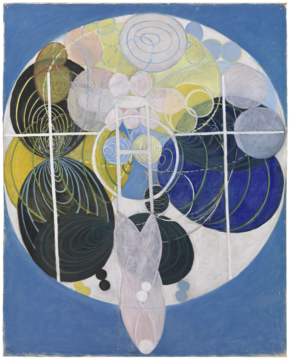 The biggest argument I’ve ever witnessed was about whether men had landed on the moon. Some years ago, at dinner—paella and wine—a chemist with a Ph.D. from Stanford suggested that the moon landing had been a hoax. This did not go over well with his father-in-law at the head of the table. At first I didn’t understand what I was hearing—I didn’t know then how many people believe the moon landing to be a fiction. Soon the men were roaring, the chemist’s brother-in-law got involved: “Of all the boneheaded bullshit to come pouring out of your face …” “Well, how do you explain …” Threats were flung, neck veins swelling, a hand slammed on the table, a knife clattered to the floor. We joked about it recently, the brother-in-law and I, recalling the scene, eating pasta with clams and garlic, and he asked me, “You’ve read the Apollo 11 eulogy speech, right?” I hadn’t. “Read it,” he said.
The biggest argument I’ve ever witnessed was about whether men had landed on the moon. Some years ago, at dinner—paella and wine—a chemist with a Ph.D. from Stanford suggested that the moon landing had been a hoax. This did not go over well with his father-in-law at the head of the table. At first I didn’t understand what I was hearing—I didn’t know then how many people believe the moon landing to be a fiction. Soon the men were roaring, the chemist’s brother-in-law got involved: “Of all the boneheaded bullshit to come pouring out of your face …” “Well, how do you explain …” Threats were flung, neck veins swelling, a hand slammed on the table, a knife clattered to the floor. We joked about it recently, the brother-in-law and I, recalling the scene, eating pasta with clams and garlic, and he asked me, “You’ve read the Apollo 11 eulogy speech, right?” I hadn’t. “Read it,” he said.
more here.
Tuesday Poem
Those Winter Sundays
Sundays too my father got up early
and put his clothes on in the blueblack cold,
then with cracked hands that ached
from labor in the weekday weather made
banked fires blaze. No one ever thanked him.
I’d wake and hear the cold splintering, breaking.
When the rooms were warm, he’d call,
and slowly I would rise and dress,
fearing the chronic angers of that house,
Speaking indifferently to him,
who had driven out the cold
and polished my good shoes as well.
What did I know, what did I know
of love’s austere and lonely offices?
Robert Hayden
Sunday, February 20, 2022
Fugitive Pedagogy: The underground history of black schooling
Lydialyle Gibson in Harvard Magazine:
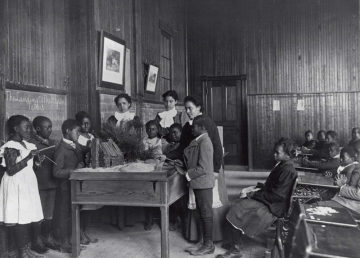 JARVIS GIVENS remembers feeling like a door had opened in his mind. Having flown across the country on the kind of offbeat, open-ended quest that later would become a regular part of his research process, he was sitting in a church storage closet in Prince George’s County, Maryland, sorting through a stack of old documents and videos. This was the spring of 2016; he was just a few weeks away from receiving his doctorate in African diaspora studies from the University of California, Berkeley. His dissertation, on the history of black education during the era of Jim Crow, was basically done. “I’d already put closure on it,” he says. “I was just waiting for approval to file it.”
JARVIS GIVENS remembers feeling like a door had opened in his mind. Having flown across the country on the kind of offbeat, open-ended quest that later would become a regular part of his research process, he was sitting in a church storage closet in Prince George’s County, Maryland, sorting through a stack of old documents and videos. This was the spring of 2016; he was just a few weeks away from receiving his doctorate in African diaspora studies from the University of California, Berkeley. His dissertation, on the history of black education during the era of Jim Crow, was basically done. “I’d already put closure on it,” he says. “I was just waiting for approval to file it.”
But then he received an invitation he couldn’t pass up, from a woman who belonged to an organization founded a century earlier by the historian and educator Carter G. Woodson, Ph.D. 1912. Often called the “father of black history,” Woodson and his organization—the Association for the Study of African American Life and History—were central to Givens’s dissertation. The woman, Barbara Spencer Dunn, had heard about the young scholar’s research and wanted to help. She wasn’t an academic, but for years she’d been collecting materials related to Woodson and the black teachers and students he interacted with all over the country. Maybe something in there would interest Givens?
More here. (Note: At least one post throughout the month of February will be devoted to Black History Month. The theme for 2022 is Black Health and Wellness)
The Uneasy Alliance Between Frederick Douglass and White Abolitionists
William Thomas III in The New York Times:
 On Aug. 6, 1845, Frederick Douglass set sail on a speaking tour of England and Ireland to promote the cause of antislavery. He had just published “The Narrative of the Life of Frederick Douglass,” an instant best seller that, along with his powerful oratory, had made him a celebrity in the growing abolition movement. No sooner had he arrived in Britain, however, than Douglass began to realize that white abolitionists in Boston had been working to undermine him: Before he’d even left American shores, they had privately written his British hosts and impugned his motives and character.
On Aug. 6, 1845, Frederick Douglass set sail on a speaking tour of England and Ireland to promote the cause of antislavery. He had just published “The Narrative of the Life of Frederick Douglass,” an instant best seller that, along with his powerful oratory, had made him a celebrity in the growing abolition movement. No sooner had he arrived in Britain, however, than Douglass began to realize that white abolitionists in Boston had been working to undermine him: Before he’d even left American shores, they had privately written his British hosts and impugned his motives and character.
The author of these “sneaky,” condescending missives, Douglass soon discovered, was Maria Weston Chapman, a wealthy, well-connected and dedicated activist whose scornful nickname, “the Contessa,” stemmed from her imperious behind-the-scenes work with the leading abolitionist William Lloyd Garrison. In Linda Hirshman’s fresh, provocative and engrossing account of the abolition movement, Chapman was “the prime mover” in driving Douglass away from the avowedly nonpolitical Garrisonians and toward the overtly political wing of abolitionism led by Gerrit Smith, a wealthy white businessman in upstate New York. With brisk, elegant prose Hirshman lays bare “the casual racism of the privileged class” within Garrison’s abolitionist circle.
Setting out on her research, Hirshman initially considered Chapman a feminist hero whose significant role in the movement had long been overlooked. After all, Chapman raised enormous funds for abolition societies, edited Garrison’s newspaper, The Liberator, for years in his long absences, and carried on a massive petition campaign to end slavery. But when she read Chapman’s voluminous correspondence, Hirshman encountered the ugly personal rivalries and private politics at the center of a shaky alliance between the uncompromising Garrison and the ambitious and self-possessed Douglass.
More here. (Note: At least one post throughout the month of February will be devoted to Black History Month. The theme for 2022 is Black Health and Wellness)
Reader Comments for The New York Times’ “Homestyle Spaghetti Carbonara” Recipe
Todd Levin at Medium:
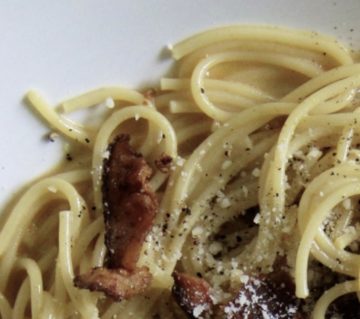 Angela
Angela
This recipe was incredibly easy to follow, and a hands-down winner with my family. I followed the directions exactly, except for cutting the parmesan cheese in half because the amount called for in the recipe is insane and repulsive.
kareem
Simple, and delicious as written. Tripled the cheese.
chef dorothy
Thanks for the recipe. FYI, works just as well with Prego brand carbonara sauce, Del Monte canned spaghetti, and ham leather.
Annie Oatly
Is there a vegan option? As a vegan (I’m vegan), I consider it my personal responsibility to search for recipes that are clearly dependent on meat and dairy, then ask if there’s a vegan option.
More here. [Thanks to Dahlia Lithwick.]
Syl Johnson (1936 – 2022) blues singer/songwriter
Betty Davis (1944 – 2022) funk queen
